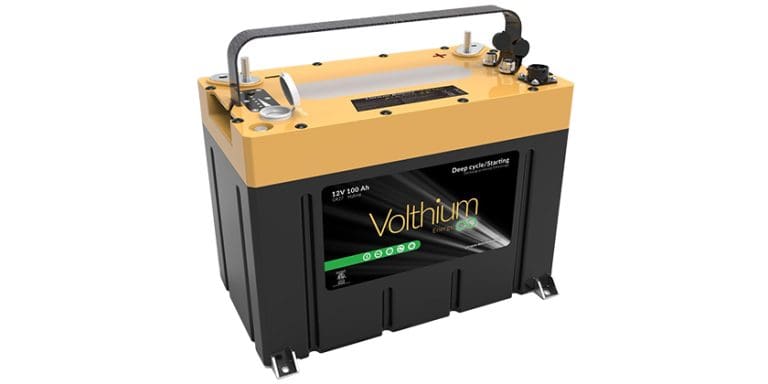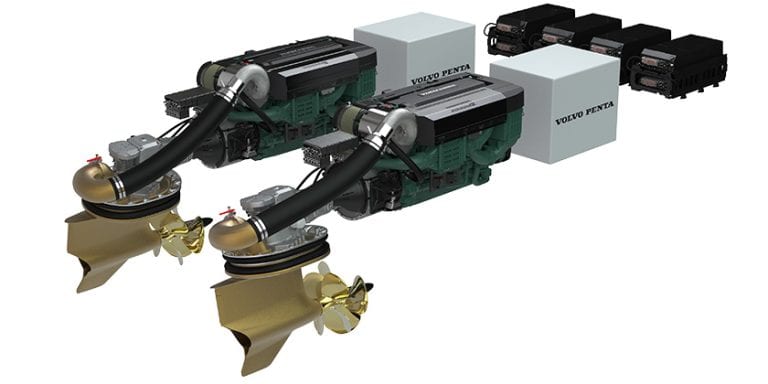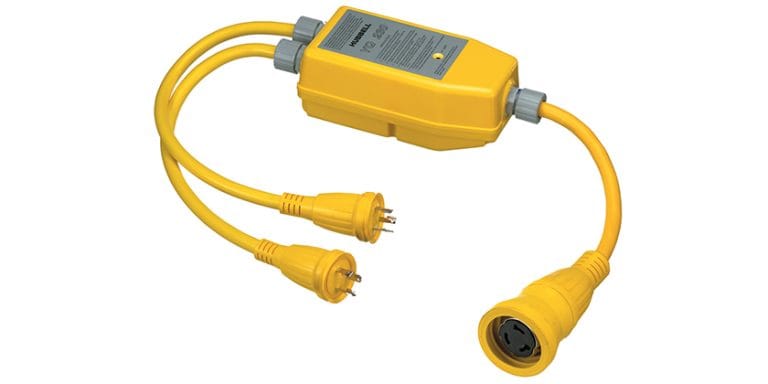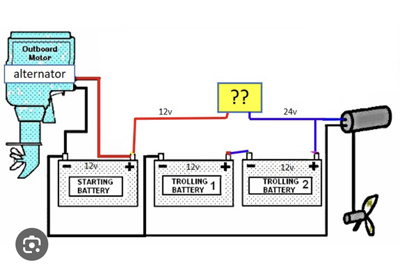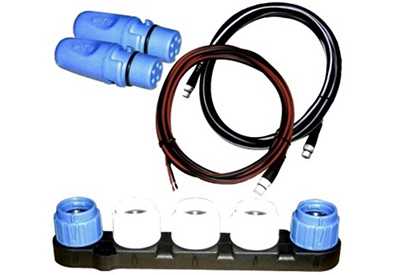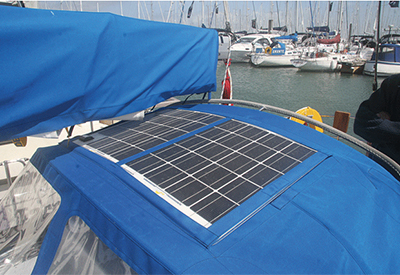Charging
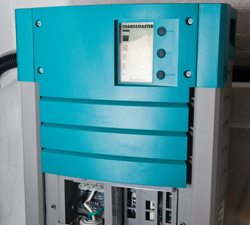
In Charging Part I, we looked at battery technology and options. In Part II we reviewed the primary charging system, shore power and the ubiquitous shore connection cords. In Part III, we look at onboard charging systems.
Battery Chargers
With a source of external power, shore-cord or generator, current still needs to be fed back into your battery banks to reset their chemistry and return them to full electrical output. This requires a battery charger.
Here most boaters can rightly claim to confusion. There are dozens of brands available and most products are a “black-box” with little to distinguish one from the others. There is nothing to show a quality comparison or actual performance, save massive ‘spec’ sheets that tell us too much, usually in techo-talk; incomprehensible without an advanced degree.
Some brands are well-known, others are obscure. Conversations with friends will probably confuse more than enlighten. Retailers will promote what they carry and have lots of horror stories about choosing incorrectly. Some of those stories might be self-serving, but there may elements of truth as well.
To start, all battery chargers transform the power from the source – almost always alternating current – into direct electrical current that reverses the chemical reaction in the battery and restores its electrical power. Whatever the battery type, the charging profile needs to be specifically matched in charging voltage, current (Amps) as well as the time duration at each step.
The concept of charging steps, or stages is important. All batteries – particularly lead-acid ones – will work best and live longest with a 3-stage charging profile. The first stage, called bulk, puts in maximum voltage and current but only for a fairly short period, a third of the charging cycle or less. The next stage, absorption, holds charging voltage constant and reduces current levels, but it does the majority of the charging. When the battery is about 95% charged the charger changes to float profile, much lower voltage and current, but it will maintain that small but constant indefinitely. This is sometimes called a “trickle charge”. Note that many inexpensive automotive chargers and solar and wind generators all produce a similar small current, trickle or float charge. This will maintain a charge, or it will actually charge any battery, but it will take many hours to do so. More detail, including graphics, is available from Battery University a comprehensive reference on all things battery related.
How does the charger know what profile to use? The first step is for the user to select the battery type on the charger – usually a manual switch that sets the particular 3-step profile. The next step is up to the charger – “smart” technology senses circuits and measures the state of the battery bank and applies the appropriate voltage, current, and time period. The charging system constantly monitors the state of the battery, and for this reason alone, common, inexpensive one-stage automotive chargers, even well-known brands, should be avoided. They are too much a “blunt instrument” and should never be used on marine battery banks. Instead a more sophisticated multi-stage “smart charger” is needed.
The charge profiles are different for different battery types. Flooded lead-acid batteries are the easiest to match, but gel, AGM and Lithium ion all need specific and sometime quite different profiles. Some battery manufacturers call for different profiles than other manufacturers, even within the same battery type, another reason to get professional advice. If a new charger is being considered, check if it is compatible with the battery bank, and vice-versa. Professional advice is valuable, as is direct contact with manufacturers.
Many battery chargers today are available combined with an inverter, a worthwhile combination as it ensures compatibility of these two components and saves space and minimizes wiring. Inverters and chargers do completely different jobs however. While a charger simply re-builds battery capacity, an inverter is an output device. Batteries create direct current (DC) which is fine for most marine electrical components, marine radios, navigation electronics, even marine pumps and refrigerators, but household appliances, toasters, blenders, microwaves, stoves and ovens, etc. all need alternating current (AC). It’s the inverter’s job to turn the DC battery output into the needed 120-volt (household) current for appliances. That is not an easy job, nor an inexpensive one. The drain on a battery bank for these household level currents is severe, a ratio of at least 10 to one – all of which increases the demands on the battery bank, which necessitates further charging.
There are a great many inverter/charger brands on the market. Brands include MasterVolt, Outback, Xantrex, ProMariner, Charles, and dozens of others. The key is not the brand itself but the performance specs that need to match the electrical load of the boat and the battery size and type. Again, professional assistance is a must, as is contact with appropriate manufacturers.
Permanent Generators
Boaters with larger vessels or ones with a larger electrical needs will soon decide on a permanent generator. For marine applications there are a number of manufacturers including Northern Lights, Onan, Westerbeke, MasterVolt, Fischer-Panda, Next Generation Power, and a number of others.
Generators are needed for the increasing large house current electrical load for refrigeration and cooking, for example, as well as for charging the battery banks that are found on most power-boats and larger sailboats. Almost all of these fixed generators are powered by small diesel engines, the most well-known by Kubota. They are coupled to a dynamo producing the charging electrical current. Outputs vary according to the battery bank needs, but most common sizes for recreational boats are between 5 and 15 kW. The major efforts of manufacturers today include increasing reliability and in reducing noise, the latter is found with more sophisticated sound shields and vibration free shock-mounts.
For better reliability manufacturers are finding ways to lengthen belt life by reducing revs. 1800 rpm is more common today, down from 2500 to 3500 previously. Diesels are already fairly reliable, but the occasional use pattern of most recreational boaters puts a great amount of uneven wear on critical components. Most important is clean oil, and most manufacturers recommend oil and filter changes every 100 operating hours. Many generators have Hobbs meters to make record keeping easier.
If a new generator is being considered the most care should be given to sizing it correctly and matching it to the battery bank involved. Flooded batteries need longer charge times at modest current, but gel, AGM, and LiION batteries can use a higher current and shorter duration charge. A higher capacity generator may be indicated in these applications.
Care should be taken, however to match unit capabilities closely, as installing a higher capacity than is needed is not wise. Running a generator at less than ideal load can cause premature wear and early replacement of components. Most boaters want to have as little noise as possible from their generator set, as do their neighbors in remote anchorages. So noise-canceling is important. Some generators are so well noise-cancelled that the only sound is water being pumped from their cooling system. That’s quiet, but some models can even be installed with an under-water exhaust that is essentially silent. At a premium price, of course.
Existing generators are a classic compromise. They produce 120v house current for appliances, then covert to DC (rectify) to charge batteries. Transitional losses abound. But one more option is available, a DC generator. Without needing to convert current from AC back to DC a new DC generator can operate at higher efficiencies, with less time and cost to operate. This choice means running most electrical systems by DC and others through the inverter from the battery bank. This needs a larger battery bank, but is a system that works well with high output Lithium ion batteries. This is the preferred solution of Coastal Craft, for example who have found the ideal match of lithium ion battery bank and DC generator to give electrical performance but minimizes charging times.
As with many things mechanical and electrical, professional installation is a must. Far too many generator sets are installed poorly and the DIY crowd is not sufficiently skilled for this equipment. Leave it to the pros. Particularly, water-lift mufflers are easily installed incorrectly and are a peril to the engine itself as cooling water can be siphoned back into cylinders with disastrous results.
Care should be taken on size and weight, as well as noise. Most boats will use up space for mechanical systems fairly quickly. Access is critical for routine maintenance and sound shields need to be easily removed and replaced. Engines and generators are heavy and bulky meaning dimensions are as important as performance specs. We’re impressed with the size-weight-performance of the Fisher-Panda and the MasterVolt lines for example. The physical footprint and overall installed weight of generators can be critical to the performance of sailboats and smaller craft, so careful shopping is advised.
Outback www.outbackpower.com
Xantrex www.xantrex.com
ProMariner www.pmariner.com
Northern Lights www.northern-light.com
Onan www.cumminsonan.com
Westerbeke www.westerbeke.com
Fischer-Panda www.fischerpanda.com
Next Generation Power www.nextgenerationpower.com
Kubota www.kubotaengine.com
by Robert Buller

